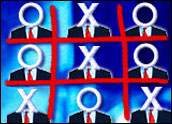
One of the great things about CRM is that it allows you to discover who your best customers are — and not just who the best ones are on a regular basis, but who are best over time. Knowing this allows you to focus your sales and marketing efforts more precisely and ensure the loyalty of these customers over the long haul.
It also allows you to figure out which customers are less lucrative, so you can devote sales and marketing resources that are appropriate to their relative value to your company.
However, customer segmentation can go too far. Shifting too much attention to the best at the expense of the rest is bad business — and it can cause your sales to suffer in the long term.
The problem here is the tendency to get caught up in the numbers.
In the Thrall of the Numbers
Analytical tools are great for giving you a high-altitude view of your customers and how they relate to your business. That’s valuable. However, as many CRM thinkers — most notably SugarCRM Vice President of Strategic Solutions Mitch Lieberman — have pointed out, the real aim of modern CRM is to scale up the kinds of relationships we’ve had with customers in the past. That means making them feel valued and attached to your company; it doesn’t mean treating them as if they were statistics.
The numbers lead some to become wrapped up in the abstract and to forget who customers are — people.
The nadir of this is the idea of “firing your customers,” a concept that fades in and out of fashion every few years. Some companies have established percentages — as in, “Each year we ‘fire’ 5 percent of our customers who are the lowest in sales.”
Ideas like this are entirely business-centric and can have widespread negative effects on loyalty. While the economy has curtailed this behavior — these days, every customer is valuable — the misguided concept of addressing a number with another number still exists.
Some companies devote an inordinate amount of their marketing efforts to their best customers. These customers should indeed be held close, but fixating on them is not the proper approach. The rest of your customers may be on the verge of moving into that top tier, but unless you put the effort into building your relationships with them, they may never evolve beyond where they are.
At the same time, you’re guaranteed a bit of attrition among your best customers. Without some efforts put into cultivating the next generation of best customers, you are essentially committing yourself to a business death spiral.
Social Circumstances
There’s another aspect to this issue these days: the social aspect. Your customers don’t exist in a vacuum; they have an increasing ability to communicate with each other and compare notes. Customers don’t consider themselves to be among the “best” or “the rest” — they just consider themselves customers. And if they get the inkling that other customers are getting an inordinate amount of attention from a vendor who’s all but ignoring them, their desire to continue as a customer can flag considerably.
The right approach is to make all your customers feel valued. That’s not to say you shouldn’t treat your best customers differently — after all, they’re the customers whose relationships with you are often the strongest, and strong relationships have different characteristics.
Instead, this approach calls for you continue to strengthen your customer relationships across the board. That real-world metaphor still works: While you would certainly want to pay attention when your best customer visited your store, you’d also want to acknowledge other customers and make efforts to know their wants and needs. You wouldn’t ignore them. After all, they’re customers — and, more importantly, people.
Remembering that the numbers in CRM reports represent people is critical to building strategies that nurture, encourage and sustain customer relationships. Falling in love with the numbers at the expense of customers renders any real attempt at CRM moot.
CRM Buyer columnist Chris Bucholtz blogs about CRM at Forecasting Clouds. He has been a technology journalist for 15 years and has immersed himself in the world of CRM since 2006. When he’s not wearing his business and technology geek hat, he’s wearing his airplane geek hat; he’s written two books on World War II aviation, and his next two are slated for publication in 2010.






















































I’ve been exposed to the theory that you should fire your worst customers. In fact, Alan Weiss, author of Million Dollar Consultant (and related books) promotes if I’m not mistaken.
If your CRM initiative is able to measure disengagement, which it should, then it’s really not a matter of firing your worst customers. It’s deciding which disengaging customers to engage. Look at it from the perspective of adding revenue and margin you would have otherwise lost. The defectors have essentially been fired, but only in a passive sense.
Hope that makes sense